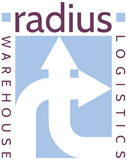The Radius Logistics Guide to USA & Far East Inbound and Outbound Movements
Here at Radius Warehouse & Logistic Services, we specialise in USA and Far East inbound and outbound movements. Since we were originally incepted in 1996, we have focused on improving, developing and providing this service to many clients and offering exceptional results. If you’re just starting out in the world of international shipping, much of the jargon is likely to be confusing. It takes years to perfect the intricacies of international shipping logistics. This guide will help you to better understand what is meant by inbound and outbound movements and how they can benefit the growth of your business.
What are Inbound and Outbound Movements?
Running a business between countries requires specialist organisation and logistical management. It relies on the equal partnership between many different clients, suppliers and manufacturers to make it work. Let’s take a look at the differences between inbound and outbound international movements.
Inbound movements
Noted as being the most complex of the two, inbound movements refers to the movement of goods or raw materials into your business. These come from your suppliers – whether that be before or after the final product has been manufactured. The logistics involved to make this process work require the expertise of specialists. Some of the main issues faced when planning and orchestrating inbound freight movement are:
- Excessive congestion causing increased delay times.
- Higher unloading costs due to poor planning.
- Reduced visibility on arrival times for freight movements.
- Limited structure and compliance requirements to streamline and minimise inefficiencies.
Outbound movements
In contrast, outbound movements are the movement of freight from your business to the distributor or the end customer. This includes everything from the actual transportation through to the storage between purchases and the delivery systems you put in place. Within the supply chain, it is related to the customer service and channel of distribution.
How do they differ?
Understanding where both outbound and inbound logistics fit into your business can help structure your logistics and minimise the risk of issues.
Partners within a supply chain
Within both movement models, businesses will need to work with different partners to make their supply-chain work. Inbound freight movement relates to the relationship played between you and your suppliers. To make this process as smooth as possible, it’s vital that you build good communication and solid relationships that focus on offering the best service for everyone involved. Minimising the risk of mis-communication can significantly reduce the risk of issues occurring, for both sides of the party.
Equally, outbound movement relates to how you get your final product to the end customer. This could be through cross trade freight movement – working with the manufacturer to ship products directly to your end customer without it coming into your home country. You can read more about cross trade shipments in our blog here.
Damage to goods and relative liability
During both inbound and outbound, you need to consider who holds liability for damage to the goods. This primarily focuses around financial responsibility – determining who will have to pay in the event of damage minimises the risk of supply chain breakages in the future. Terms covering this include:
- Free on Board (FOB) – With this model, the recipient (inbound) is responsible for shipping costs
- Delivered Duty Paid – With this model, international suppliers pay for all import costs and shipping fees before the item is delivered to the end user.
What types of businesses are they designed to benefit?
The benefit of this form of freight movement is that it can be used by businesses of all shapes and sizes. If you find a more reliable and well-priced supplier internationally, inbound marketing allows you to reap the benefits of this new relationship. It means you become less dependent on a smaller base of suppliers and extends the possibilities of your business growing. Equally, expanding into different markets means you can pass your product to a wider audience and expand the ability of your business to become what you envision it to be.
How does a specialist freight forwarding company help?
As we’ve mentioned about, inbound and outbound movements can be difficult to orchestrate. They are complex, requiring the support of individuals who understand them. This is where a professional freight forwarding company comes into play. The team here at Radius Warehouse & Logistic Services have over 20 years of experience supporting businesses looking to make the most out of inbound and outbound freight movements.
We’re here to help if you have any questions or queries about this complex model. Our team will help with international customs paperwork, logistics organisation and management to ensure you can rest easy as your business grows. If you would like to discuss your business growth with our team of specialists, get in contact with the team here today.



